Key Takeaways
1. Simple rules tame complexity in an increasingly interconnected world
Complexity arises whenever a system—technical, social, or natural—has multiple interdependent parts.
Increasing interconnectedness. Since the late 20th century, the world has become dramatically more complex and interconnected. This is evident in:
- Global trade: International trade agreements have increased sixfold since 1990
- Travel: Global air traffic has nearly tripled since 1990
- Finance: Correlation between countries' stock markets has more than doubled
- Information: The Internet has revolutionized interconnectedness in a way comparable only to the invention of the printing press
Simple rules as a solution. Simple rules provide a powerful weapon against overwhelming complexity by:
- Conferring flexibility to pursue new opportunities while maintaining consistency
- Producing better decisions when information is limited and time is short
- Allowing members of a community to synchronize their activities on the fly
2. Effective simple rules share four common traits
Capping the number of rules makes them easy to remember and maintains a focus on what matters most.
Four key traits of effective simple rules:
- Limited in number: Usually a handful of rules, making them easy to remember
- Tailored to the user: Specific to the person or organization using them
- Applied to a well-defined activity or decision: Focused on a particular task, not vague platitudes
- Provide clear guidance while allowing discretion: Offer direction but leave room for judgment
Examples:
- Triage rules for battlefield medics
- Michael Pollan's rules for healthy eating: "Eat food. Not too much. Mostly plants."
- Netflix's expense policy: Four simple rules replaced thick manuals
3. Simple rules work by providing flexibility, improving decisions, and enabling coordination
Simple rules allow people to make quick, reasonably accurate decisions that require less effort than more complicated approaches.
Flexibility. Simple rules provide a threshold level of structure while avoiding rigidity, allowing people to:
- Seize fleeting opportunities
- Adapt to changing circumstances
- Exercise creativity within defined boundaries
Better decisions. Simple rules can outperform complex models by:
- Focusing on key variables and ignoring peripheral ones
- Avoiding overfitting to past data
- Being easier to remember and apply, increasing the likelihood of action
Coordination. Simple rules enable collective behavior by:
- Providing a framework for individuals to synchronize their actions
- Allowing for adaptation to local conditions while maintaining overall coherence
- Working with only local information, not requiring a complete view of the system
Examples:
- Honeybees using simple rules to choose new nest sites
- Improvisational comedians coordinating performances without scripts
- Wikipedia editors collaborating on millions of articles
4. Simple rules come from various sources, including evolution and deliberate design
Just gaining international experience was not enough for a strong performance, and instead the entrepreneurs had to translate that experience into simple rules.
Sources of simple rules:
- Natural selection: Evolutionary processes over long periods (e.g., butterfly mating behaviors)
- Codifying personal experience: Reflecting on and distilling lessons from one's own history
- Drawing on others' experience: Learning from role models, advice, books, and analogies
- Distilling scientific evidence: Reviewing research to identify consistent findings
- Negotiating an agreement: Developing rules through discussion among stakeholders
Key learning processes for improving rules:
- Reflecting on experience: Regular meetings to discuss successes and failures
- Varied but related experiences: Exposure to diverse but connected situations
- Multitasking ways to learn: Combining multiple learning approaches
Example: Airbnb's founders improved their rules by:
- Learning from expert advice (Y Combinator dinners)
- On-the-ground experiences with hosts and guests
- Conducting disciplined experiments
5. Boundary rules guide basic yes-or-no decisions
Boundary rules guide the choice of what to do (and not do) without requiring a lot of time, analysis, or information.
Characteristics of boundary rules:
- Help decide between mutually exclusive alternatives
- Useful for screening many options quickly
- Effective when time, convenience, and cost matter
Applications:
- Judges deciding on bail: Three simple rules explain 95% of bail decisions
- Burglars choosing targets: "Avoid houses with a vehicle parked outside"
- DARPA selecting projects: Must further scientific understanding and have practical use
Medical applications:
- Diagnosing serious infections in children
- Identifying clinical depression: Four simple questions with 97% accuracy
- Detecting strokes: Three bedside rules as accurate as MRI scans
Benefits:
- Quick decisions with limited information
- Easy to understand and communicate
- Translate broad policies into practical guidelines
6. Prioritizing rules rank options when resources are limited
Prioritizing rules can help you rank a group of alternatives competing for scarce money, time, or attention.
When to use prioritizing rules:
- Large number of opportunities meet initial criteria
- Resources (time, money, attention) are limited
- Conflicting views on what to prioritize
Examples:
- Venture capital firm ranking investment opportunities
- Hospital triaging patients during mass casualties
- Ancient Romans prioritizing conflicting legal interpretations
Case study: América Latina Logística (ALL)
- Context: Brazilian rail company with limited capital for upgrades
- Challenge: Prioritize investment projects with only $15 million available
- Solution: Simple prioritizing rules developed by management team
- Remove bottlenecks to growing revenues
- Provide benefits immediately
- Minimize up-front expenditures
- Reuse existing resources
Results:
- Within 3 years: 50% revenue increase, tripled operating cash flow
- Successful IPO, became Latin America's largest independent logistics company
7. Stopping rules dictate when to reverse a decision or halt an activity
Stopping rules dictate when to reverse a decision.
Importance of stopping rules:
- Help overcome status quo bias and escalation of commitment
- Crucial for decisions involving sequential alternatives
- Particularly valuable in investing and personal behavior change
Examples:
- Female crickets deciding when to stop searching for mates
- Gerald Loeb's 10% investment loss rule: "If an investment loses 10 percent of its initial value, sell it."
- French vs. American eating habits: Internal vs. external cues for stopping meals
Mount Everest disaster case study:
- Context: Deadliest year of climbing in 1996
- Critical stopping rule: "If you aren't on top by two o'clock, it's time to turn around."
- Failure to follow the rule led to multiple deaths
- Lessons:
- Importance of adhering to pre-established stopping rules
- Dangers of escalating commitment in high-stakes situations
- Need for clear, actionable guidelines in complex environments
8. How-to rules guide the basics of executing tasks
How-to rules guide the basics of executing tasks, from playing golf to designing new products.
Characteristics of how-to rules:
- Provide guidance on task execution without prescribing every detail
- Allow for flexibility and adaptation to unexpected situations
- Can stimulate creativity within defined boundaries
Examples:
- Seymour "Lobby" de Lotbiniere's six rules for sports commentary
- U.S. Forest Service rules for fighting dangerous fires
- The White Stripes' album-making rules: No blues, no guitar solos, no slide guitar, no covers, no bass
Creativity and how-to rules:
- Contrary to common belief, constraints can foster creativity
- Simple rules provide a starting point and channel creative energy
- Artists like Claude Monet and Elmore Leonard used self-imposed constraints
Business application: Google's hiring rules
- Look for eccentricity
- Seek strong referrals from other Google employees
- Avoid anyone with even the smallest inaccuracy on their resume
- Re-create grad student offices to foster communication and creativity
9. Coordination rules orchestrate collective behavior
Coordination rules guide interactions among members who intermingle in a complex system.
Key aspects of coordination rules:
- Enable individuals to work together without central direction
- Allow for adaptation to local conditions while maintaining overall coherence
- Often rely only on local information, not a complete view of the system
Natural examples:
- Starling murmurations: Three simple rules for flocking behavior
- Locust swarms: Two rules for transitioning from solitary to collective behavior
Human applications:
- Improvisational comedy: "Yes, and..." rule for building scenes
- Military coordination: "March toward the sound of gunfire"
- Zipcar's rules for car sharing
Benefits of coordination rules:
- Enable collective achievements beyond individual capabilities
- Balance individual interests with group objectives
- Allow for flexible responses to changing circumstances
10. Timing rules provide guidance on when to take action
Timing rules guide when to take actions.
Types of timing rules:
- Event pacing: Linking actions to specific triggers or events
- Time pacing: Creating deadlines and rhythms based on clock or calendar
Natural examples:
- Insomnia treatment: Four simple rules for when to sleep and wake
- Dragonfly migration: Rules for when to fly based on temperature and wind conditions
Business applications:
- Pixar's annual movie release cycle
- Start-Up Chile's entrepreneur hosting timeline
Benefits of timing rules:
- Create predictable rhythms and deadlines
- Help synchronize activities across individuals or organizations
- Enable efficient use of resources by setting clear timeframes
11. Simple rules can be systematically improved over time
People improve their simple rules in a predictable pattern, and learning processes and combinations of processes can accelerate improvement.
Pattern of rule improvement:
- Start with poor or no conscious rules
- Rules become more strategic and abstract over time
- Different types of rules are learned in a specific order
- Number of rules grows, then shrinks and stabilizes
Learning processes for improving rules:
- Reflecting on experience: Regular reviews and discussions
- Varied but related experiences: Exposure to diverse but connected situations
- Multitasking ways to learn: Combining multiple learning approaches
Case study: Shannon Turley, Stanford football strength coach
- Journey from traditional weight-lifting focus to injury prevention and functional training
- Continuous improvement through varied experiences and reflection
- Resulted in dramatic reduction in injuries and improved team performance
12. Breaking and remaking rules is necessary in novel situations
To respond effectively to major change, it is essential to investigate the new situation actively, and create a reimagined vision that utilizes radically different rules.
When to break and remake rules:
- Major disruptions render existing understanding obsolete
- Incremental improvements are insufficient
- Opportunity to proactively change the landscape
Steps for breaking and remaking rules:
- Recognize the need for fundamental change
- Deeply investigate the new situation
- Create a reimagined vision
- Develop radically different rules
- Implement change quickly and comprehensively
Examples:
- California gardeners adapting to drought: Shift from temperate to Mediterranean gardening principles
- Oakland Athletics baseball team: "Moneyball" approach and subsequent adaptations
- Netflix's House of Cards: Breaking traditional TV production and distribution rules
Key lessons:
- Avoid superficial responses to major changes
- Be willing to discard deeply ingrained assumptions
- Move quickly to implement new rules once developed
Last updated:
FAQ
What's Simple Rules: How to Thrive in a Complex World about?
- Decision-making focus: The book by Donald Sull and Kathleen M. Eisenhardt explores how simple rules can aid decision-making in complex environments, offering a structured approach to streamline processes.
- Real-world applications: It provides examples from various fields like medicine, business, and nature to demonstrate the effectiveness of simple rules in guiding actions and improving outcomes.
- Framework for improvement: The authors present a method for developing simple rules, making it accessible for readers to enhance their personal or professional lives.
Why should I read Simple Rules: How to Thrive in a Complex World?
- Practical insights: The book offers actionable strategies that can be immediately applied to improve decision-making and efficiency in both personal and professional contexts.
- Research-backed content: Donald Sull and Kathleen M. Eisenhardt draw on extensive research and real-world examples, lending credibility to their recommendations.
- Adaptability: Readers can learn to create their own simple rules tailored to their unique situations, making the content relevant to a wide audience.
What are the key takeaways of Simple Rules: How to Thrive in a Complex World?
- Power of simplicity: Simple rules help navigate complexity by focusing on what matters most, allowing for quicker and more effective decision-making.
- Types of rules: The book categorizes simple rules into six types: boundary, prioritizing, stopping, how-to, coordination, and timing rules, each serving a specific purpose.
- Evolving rules: Simple rules are not fixed; they can evolve based on new evidence and changing circumstances, allowing for continuous improvement.
How do boundary rules function in Simple Rules: How to Thrive in a Complex World?
- Defining choices: Boundary rules help make yes-or-no decisions by establishing clear criteria for inclusion or exclusion, such as a judge deciding on bail.
- Quick screening: They allow for rapid assessment of options, narrowing down choices in situations with many alternatives, useful in high-stakes environments like medical triage.
- Practical examples: The book provides examples, such as burglars targeting houses based on simple criteria like the presence of a vehicle.
How do prioritizing rules work in Simple Rules: How to Thrive in a Complex World?
- Ranking alternatives: Prioritizing rules help rank options when resources are limited, ensuring critical opportunities receive attention, like prioritizing customer requests based on profitability.
- Resource allocation: These rules guide decision-makers to focus on what will have the greatest impact when time, money, or attention is scarce.
- Real-world applications: The authors illustrate their effectiveness through examples from businesses and organizations that successfully implemented them.
What are stopping rules in Simple Rules: How to Thrive in a Complex World?
- Guiding decisions: Stopping rules provide criteria for when to cease pursuing an option, helping avoid escalating commitment to failing endeavors, like selling a stock after a certain loss.
- Avoiding sunk costs: They mitigate status quo bias, encouraging rational decisions rather than sticking with a losing hand due to emotional attachment.
- Practical examples: The book discusses scenarios where stopping rules can be applied, such as in personal finance and project management.
How do how-to rules function in Simple Rules: How to Thrive in a Complex World?
- Execution guidance: How-to rules provide concrete steps for executing tasks effectively, ensuring clarity and purpose in activities, like a chef preparing a dish.
- Flexibility and creativity: These rules balance structure with creativity, allowing adaptation while following a clear framework.
- Examples in various fields: The authors share examples in contexts like sports commentary and emergency response, demonstrating their versatility.
How do coordination rules function in Simple Rules: How to Thrive in a Complex World?
- Facilitating teamwork: Coordination rules guide interactions among individuals or groups, ensuring alignment toward a common goal, like in improvisational comedy.
- Emergent behavior: They allow collective behavior to emerge from individual actions, enabling groups to achieve outcomes impossible for individuals alone.
- Real-world applications: The book provides examples in settings like animal behavior and organizational teamwork, highlighting their importance in collaboration.
How do timing rules function in Simple Rules: How to Thrive in a Complex World?
- When to act: Timing rules dictate when to take specific actions, optimizing efforts based on temporal factors, like insomniacs improving sleep patterns.
- Event and time pacing: These rules can be based on events or specific times, creating rhythms and deadlines that guide behavior and decision-making.
- Examples in practice: The authors illustrate their effectiveness in scenarios like personal health and business operations, enhancing performance.
How can I create my own simple rules based on Simple Rules: How to Thrive in a Complex World?
- Follow the three-step process: Identify what will move your personal needles, select a bottleneck, and craft the rules.
- Engage stakeholders: Involve others to ensure the rules are relevant and practical, drawing on diverse perspectives for effective guidelines.
- Test and refine: Implement and test the rules in real-world situations, refining them based on feedback to ensure effectiveness.
What are some examples of simple rules from Simple Rules: How to Thrive in a Complex World?
- Dieting Rule: Brian Wansink’s rule, “Eat food. Not too much. Mostly plants,” encourages healthier eating habits without complex restrictions.
- Online Dating Rule: Harry’s rule, “Send feelers before essays,” suggests starting with short messages to gauge interest before longer communications.
- Financial Rule: The 1/N rule for investing suggests diversifying investments equally, simplifying decision-making for investors.
What are the best quotes from Simple Rules: How to Thrive in a Complex World and what do they mean?
- "Simple rules are shortcut strategies that save time and effort." This highlights how simple rules streamline decision-making and improve efficiency.
- "Willpower is a reservoir, not a river." Emphasizes the finite nature of willpower, suggesting simple rules to manage behaviors in challenging situations.
- "The best simple rules are specific, actionable, and tailored to your unique context." Underscores the importance of customization in creating effective simple rules.
Review Summary
Simple Rules: How to Thrive in a Complex World presents the concept of using concise guidelines to navigate complexity. While some readers found the book insightful and applicable to various aspects of life, others felt it was repetitive and could have been condensed. The authors provide numerous examples to illustrate their points, which some readers appreciated and others found excessive. Despite mixed opinions on its execution, many readers agreed that the core idea of simplifying decision-making processes in complex situations is valuable and potentially beneficial in both personal and professional contexts.
Similar Books
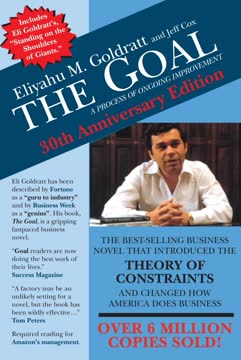

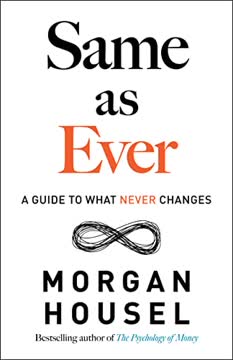

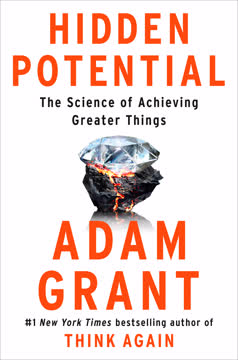


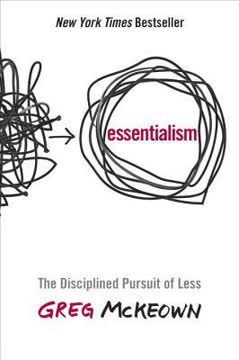
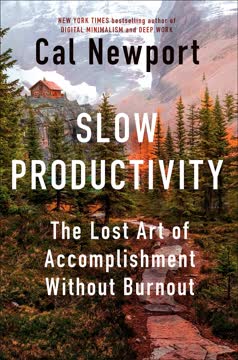

Download PDF
Download EPUB
.epub digital book format is ideal for reading ebooks on phones, tablets, and e-readers.




